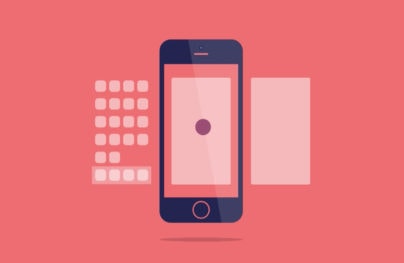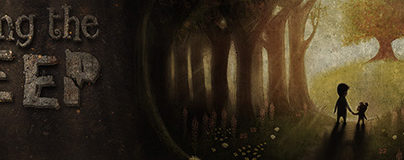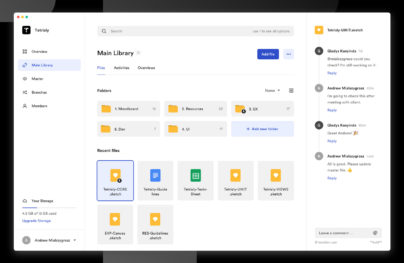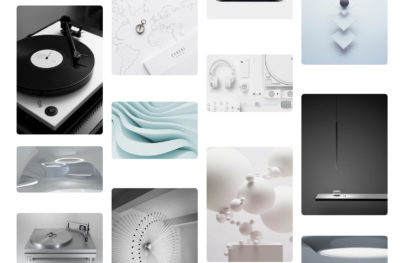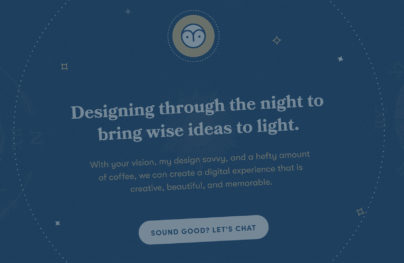A Helpful Guide for Overcoming Design Frustration
Every designer wants to be successful. But success is a subjective measure. For many designers, success means that they are proud of the work they do, but for top designers, this is not enough – top designers want to become trend makers, people who define a direction for design. Many designers work hard to achieve this goal but, unfortunately, end up in frustration rather than success. Frustration strikes way too many designers because it can be hard to live up ambitions and designers always feeling like they miss the mark.
In this article, I want to share a few thoughts on overcoming frustration to become a top designer. But before that, we need to identify two important things – the root cause of design frustration and the role of a trend maker.
Why corporate environments restraints design creativity
Let’s take a step back and talk about design activities. What do designers do in huge corporations? In many cases, they are responsible for a limited part of product design (such as working on a particular part of UI interface or specific product UI). Does it happen because designers intentionally limit themselves? Not really. In a big corporation, many different teams work on a product, and every significant change in product design requires management approval. Because the product team has a roadmap for product design, deviating from this plan can cause a lot of problems. That’s why whenever designers have initiative, they hear “We can’t go for that now. We have to follow the plan!” from their bosses. Designers can move only with baby steps to change anything, and over time this limitation seeps into how they work, building a barrier to their brains and creativity.
Side note: Of course, this does not apply to companies where conceptual design and production design are separated. Companies like Apple follow this approach – they establish design teams that work on conceptual design. Such teams are not limited by managers or development and, as a result, have more creative freedom. But in most companies, the same team is working on concepts and current product improvements.
But do designers feel bad about their role in this kind of design process? Not always. If they play the rules, each time when they deliver their work, they receive good feedback, and after a few years in the corporation, designers can even get a title “Lead.” Now a person with roughly the same level of skills will be responsible for managing a group of designers.
What I’ve described above can be considered as a ‘successful career in design’ for many people. I should say that not all designers are like that, but the problem of this career path is that it has nothing to do with the goal we have for this article – becoming a top designer, a trend maker.
With Postcards Email Builder you can create and edit email templates online without any coding skills! Includes more than 100 components to help you create custom emails templates faster than ever before.
Free Email BuilderFree Email Templates
Dieter Rams. Photograph by Abisag Tüllmann
Who is a trend maker?
To understand who a trend maker is, we need to understand what a trend is. A trend is something that people start to believe to be true. Each trend starts with an idea framed into a solution, and the more people believe in this solution, the more powerful trends become.
In the design world, when a designer creates a new trend, it’s spread by followers of this person. The more followers a designer has the better chance of becoming a trend maker. And the only way to get more followers (read, people who believe in you and your work) is to create a great design all of the time. That’s why I believe that, in design, a trend maker is a designer who solves complex problems, the tasks that haven’t been solved before. A combination of experience and imagination that trend maker has allows creating truly innovative designs – designs that solve complex problems and deliver value to people who hire him to do the work.

Smart Home UI concept . Image: Gleb Kuznetsov
Interestingly, no matter how good the designer is, she can’t decide what would be the trend. The wisdom of the crowd (read, community) decides what solution is believed or trusted. It’s faith. That’s why so many innovative products failed at first when they were presented – it happened because people didn’t believe in them yet.
Six fundamental rules for avoiding design frustration
To become a trend maker, you need to create a proper atmosphere. The atmosphere that will inspire you to explore and create.

Web Site Design. Image: Creative Minds
1. Love what you do
To become the top designer, you need to love what you do. And when I say ‘love’ I mean the same feeling that you feel for your wife/husband, your kids, your family. Your work is vital for your life because it brings you a vital element to your existence – energy. The amount of energy that you get from work is your resource to break any boundaries toward success. But it happens only when the love is strong and moves you. When you’re working, you don’t procrastinate because, like a lover you’re on a date with, you are ready to be there fully, giving your full attention.
With Startup App and Slides App you can build unlimited websites using the online website editor which includes ready-made designed and coded elements, templates and themes.
Try Startup App Try Slides AppOther Products2. Deal with situations when things don’t go as planned
You’ve invested a lot of time in crafting something but end up in a situation when it doesn’t work as expected. Most of us have been there. Our instincts tell us that we failed. Our instincts can be wrong. Things rarely go as planned, but that doesn’t mean you need to take your ball and finish your creative journey.
In many cases, not the problem that you face is what important but how you feel about it. Learn to gain an appreciation for unexpected outcomes. Obstacles can improve our performance and what seems to be a failure from the first glance can be an important milestone in your life. Both failures and success help us think outside of the box, but we can learn a lot more from the failure rather than success.
When you learn to deal with unexpected things, you will be more willing to experiment and try different things. It will improve your problem-solving skills – unlike any other designers, you’ll be more willing to take a risk and try approaches that other designers afraid to follow.

Daily Cooking Quest Interactive. Image: Hoang Nguyen
3. Look forward to fixing your mistakes
The fear of making mistakes act as a creative block for designers – designers can postpone the extremely valuable project because they believe ‘they’re not yet ready for it.’ This fear is another reason designers spend their lives in corporate environments (it’s extremely hard to make fatal mistakes when you work in a controlled corporate environment).
One rule that I’ve learned from life is that the earlier you start to experiment and try a lot of different things, the more you learn about yourself and the more comfortable you are pushing your design. You’ll learn how to take risks and move your design further. You’ll also learn, over time, that making a mistake is not a failure—it’s your invitation to get even better.
4. Time is a precious thing. Never waste it
Nothing is eternal. We all have limited time on this planet. That’s why every minute of your time costs a lot even when you don’t think about it.
Hurry up to live your life and do your job.
Think about your time as an investor. The time you invest in some activity should have ROI. Don’t waste your time on activities that don’t have ROI or have a small ROI:
- Next time someone invites you to visit a conference think “What will it give me? How will this visit bring me closer to my goal?”
- Do you have to do something because you have obligations, and not because it will bring you closer to your goal? Hire someone who will do it for you. Or learn to say no.

Health App Login. Image: Jakub Antalík
5. Focus on the small details, but plan for big
You should have a clear understanding of what you want to achieve and invest time in the relevant activities. It’s vital to create a long-term strategy and focus on it. You establish a goal and ask yourself “How do I get there? What can I do with this vision?” “What would stop me from getting there?”
Hard work is an essential part of achieving your goal. When I started my career as a designer, I had a dream – to create breakthrough products. I’ve created a plan – release three or five products in the next three years. And I invested time to be on track.
The problem I faced at the beginning – I didn’t have any experience in creating innovative products. To get this experience, I started with the basics: I focused on small details and tried to perfect them. For me, small details might be icons, animated transitions, etc. Since I didn’t have much experience, I spent years polishing small details.

Habitat. Image: Cosmin Capitanu
But the one thing I knew when I worked on them, is that I will need them for the projects I envisioned making. All those assets were extremely helpful when it came time to build full products.
6. Be prepared for constant change and learn to move quickly
There is nothing that changes as fast as design. Every time you release an innovative product, shortly after that many other people create similar products and some of those products can even be better than your original solution. Being a trendsetter means watching people constantly following your lead, improving on your introduction of an original concept. That’s why much depends on how fast can you do something new.
Two factors have a significant impact on your speed – design muscle memory, the speed in which you can recognize change and adapt to it.
Build a design memory. Building design muscle memory can help you increase the speed of delivery without sacrificing quality. When you have design muscle memory, you don’t think what to do; your brain provides solutions right away. Your muscle memory is all your experience and practical imagination together. Train your brain to make it really good at solving basic tasks like selecting a color combination or choosing the right icon for a menu. So you don’t spend much time on basic things and think more about the fundamental requirements for your design.

Swiping choose. Image: Gleb Kuznetsov
Learn to unlearn things. Learn to unlearn things is more than just a technique; it’s an art. When you master the art of unlearning it will give you a superpower – flexibility. When you don’t stick to a particular tool or design approach, you can easily switch to another tool or approach without much stress. Or, as Bruce Lee said, you become like water – flexible enough to take any form, but still powerful enough to make crash any boundaries.

Cloud Branding. Image: Eddie Lobanovskiy
Frustration is a design opportunity
By now, you might have realized that none of this is going to help you get rid of frustration in design completely. But like any other challenge, design frustration can make us better designers. That’s because to be a great designer is also to have a bigger relationship with design.
More than overcoming frustration, let it be the fuel to channel back into solving problems, your attention to detail, making the products both beautiful and usable, introducing innovation both in your products and the way you craft them. If you don’t give up, you will get there.
